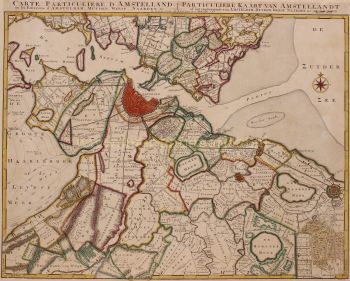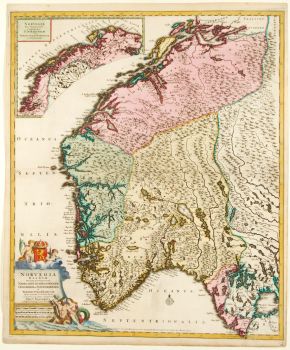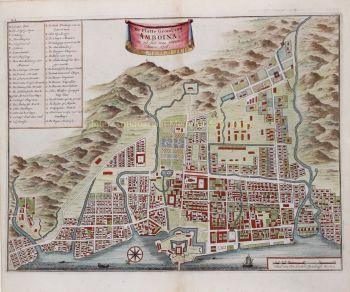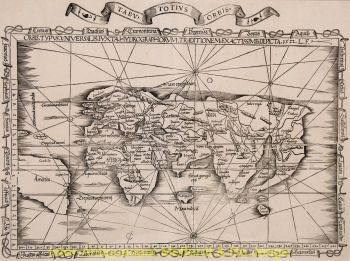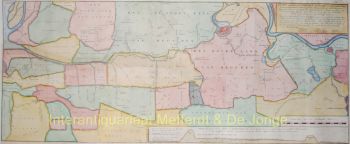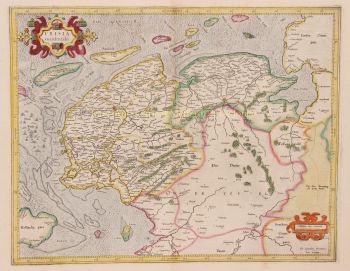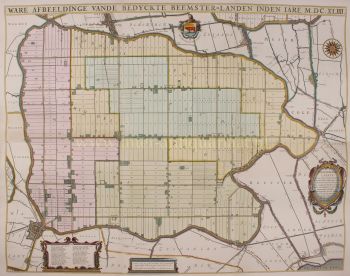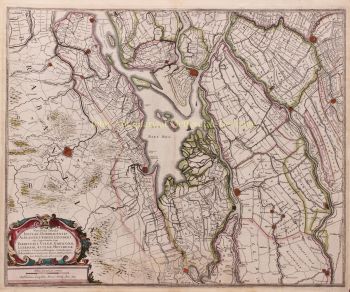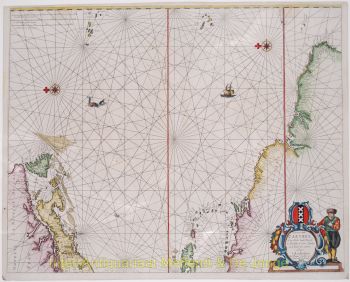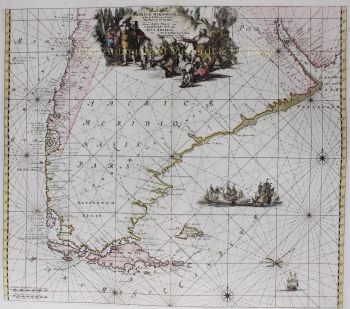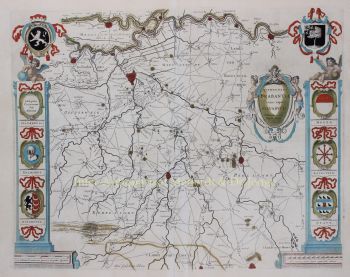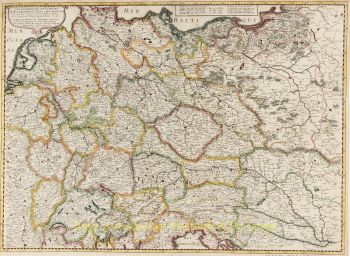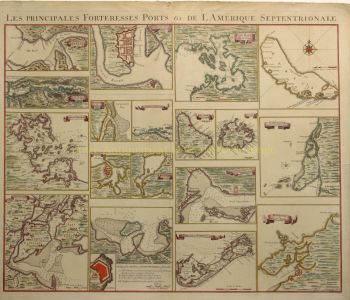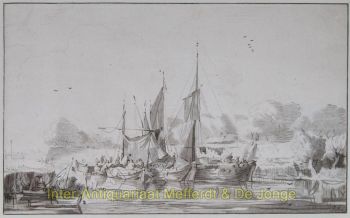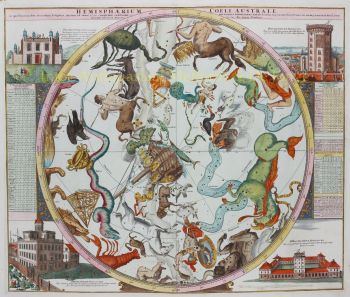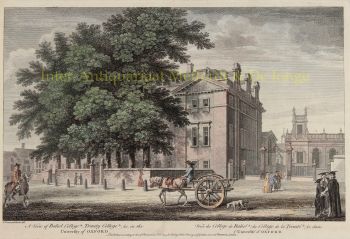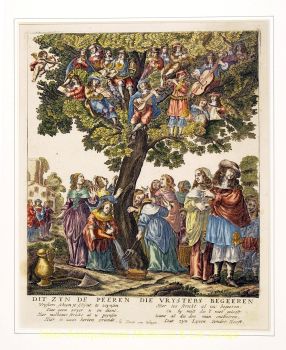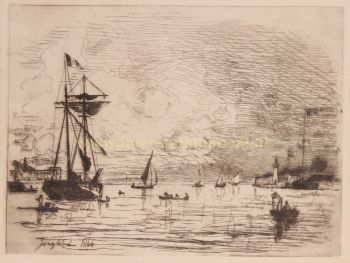Madagascar 1700
Covens and Mortier
€ 1.100
Inter-Antiquariaat Mefferdt & De Jonge
- Sobre la obra de artePIRATE HAVEN MADAGASCAR “Carte Particuliere de l'Isle Dauphine ou Madagascar et St. Laurens”, copper engraving on two sheets published by Pieter Mortier in Amsterdam approx. 1700. With original hand coluring. Size: 56,2 x 85,1 cm. A large chart of Madagascar, including the islands of Isle De Bourbon ou de Mascaregne [Mauritius], Santa Apolonia [Réunion], Isle De Ioan de Lisboa [perhaps the island of Rodrigues] and Isles de Comorre [Comoro Islands]. In lower left hand corner an inset map of the bay of Saint Augustin on Madagascar. Madagascar itself shows a place called Masalagem Nova where the Portuguese from Mozambique trade their wines and fruits. The map was published in Pieter Mortier's monumental three-part sea-atlas, 'Le Neptune François'. The first part was a counterfeit of a French original; the second part, the 'Atlas Maritime' contained charts engraved by Romeijn de Hooghe, including the famous chart of the Mediterranean; the third, the 'Suite de Neptune François', contained charts from Portuguese sources. This chart comes from a full-colour example rather than the usual outline. Of particular interest are the delineations of Antongil Bay and Nosy Boraha [Île Sainte-Marie] in the north east: at the time both were havens for European pirates preying on the East India trade and Mughal treasure ships. The actions of William Kidd, Henry Every, John Bowen and Thomas Tew in the region helped make the period of this chart the golden age of piracy. Price: Euro 1.100,-
- Sobre el artista
Covens and Mortier (1721 - c. 1862) fue una editorial de Ámsterdam, sucesora del extenso imperio editorial construido por Pierre Mortier (1661 - 1711).
El mapa de Covens y Mortier a menudo se critica como derivado, pero este no es completamente el caso. Pierre Mortier vivió en París desde 1681 hasta 1685. Allí estableció estrechas relaciones con los más grandes cartógrafos franceses de la época, incluidos De L'Isle y D'Anville.
Su modelo de negocio se basó en aprovechar la sofisticación y la tecnología de impresión holandesa para coeditar cartografía francesa de última generación. Tras la muerte de Mortier en 1711, su empresa pasó a manos de su hijo, Cornelius Mortier (1699 - 1783). Cornelius se casó con la hermana de Johannes Covens (1697 - 1774) en 1721 y, asociándose con su cuñado, estableció la firma Covens and Mortier.
Bajo el sello Covens and Mortier, Cornelius y Johannes continuaron con el modelo de Pierre de publicar las obras francesas más actualizadas con permiso. Rápidamente se convirtieron en una de las editoriales holandesas más grandes y prolíficas del siglo XVIII.
La empresa y sus sucesores publicaron miles de mapas durante un período de 120 años, desde 1721 hasta mediados del siglo XIX. Durante su larga vida, la firma Covens and Mortier publicó como Covens and Mortier (1721 - 1778), J. Covens and Son (1778 - 94) y Mortier, Covens and Son (1794 - c. 1862).
¿Está interesado en comprar esta obra de arte?
Artwork details
Related artworks
- 1 - 4 / 7
Artista Desconocido
A large wall map of Asia by Nicolas de Fer 1647 - 1720
Precio a consultarZebregs & Röell - Fine Art - Antiques
1 - 4 / 24- 1 - 4 / 12



